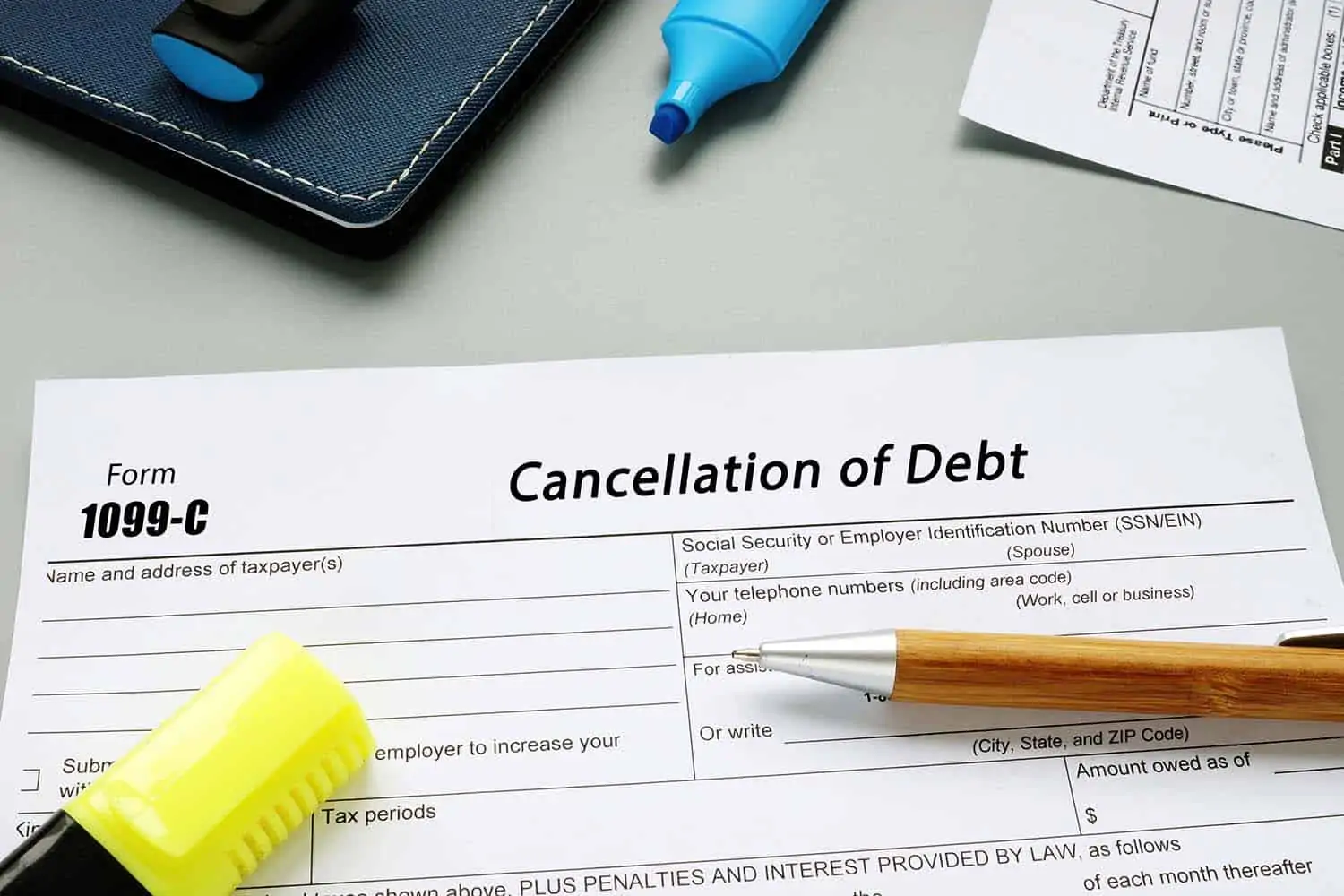Debt settlement can literally cancel a chunk of what you owe to a credit card company. Here’s the problem: You may end up owing the IRS after.
The IRS considers canceled debt earned income. Like all other income you earn throughout the year, the IRS wants its cut. But you can’t just add it your tax bill – you have to file a special form called 1099-C.
Below we breakdown what form 1099-C is and how you should file. It can save you money and frustration.
What is a tax form 1099-C?
IRS Form 1099-C is issued by a lender that has forgiven any balance you owe that you are no longer responsible for paying back.
When you cannot repay a debt, it may be possible to get the lender to settle for less than you owe. The lender or creditor essentially forgives part of the balance. The reason you get Form 1099-C is because the IRS treats canceled debt as taxable income. It’s money you received that you are no longer expected to repay, and since it’s not a gift, it counts as income. So, when a lender or creditor cancels $600 or more of debt, they must issue a 1099-C.
This form shows the amount of debt forgiven. Creditors must issue this form even if the debtor is not required to report the amount as income. Moreover, 1099-C forms must be issued for the tax year that a particular debt was canceled.
When you’ll receive a 1099-C
Should your lender agree and accept less than the full amount you owed, they will issue a Form 1099-C. In some instances, a lender may automatically discharge a debt and send a Form 1099-C if they have decided to give up their collection efforts.
Even though lenders are only ever required to send 1099-Cs if a canceled debt is worth $600 or more, it is still your responsibility to report smaller canceled debt amounts as gross income on your federal income tax returns. You also may have to pay taxes on canceled debt, even if you fail to receive a 1099-C.
What to do with it
If you’ve received a 1099-C for a debt you were unaware was canceled, contact the creditor or collection agency to verify whether they canceled the debt. If they have not canceled the debt, you may need to take additional steps to ensure the process is complete.
It may also be a good idea to make sure the debt has not been charged off and sent to a different collection agency. You should only receive a 1099-C if the debt has been forgiven, settled, or canceled.
Filing it with your taxes
Once you have figured out whether you need to claim the income or not, you must incorporate the 1099-C into your federal tax returns. That income will be added with your other forms of income to determine how much your tax liability is for the year —i.e. how much you owe.
Unfortunately, that could result in a reduction of your tax refund, or worse, it could mean that you owe the IRS money.
Filing for an exclusion due to financial hardship
The credit card companies report forgiven debt to the IRS. Therefore you should, too. And hey, the credit card company did give you the break. Now you’ve got to foot the bill on taxes. You’re not getting a break twice.
When a lender or creditor records a partial loss on money they lent you, the IRS expects you to treat the loss as “ordinary income.” Fortunately, there is a loophole in the form of the insolvency exclusion. Should you be insolvent when you reach a settlement with a lender, you can offset your 1099-C income up to the insolvent amount.
For example, say you owned $100,000 in assets the same year you were forgiven $40,000 in debt. Assume at the time you owed $160,000 in total debt, including the $40,000 forgiven. That means your net worth at the time you settled was negative $60,000. Therefore, you were insolvent by $60,000 and would not be required to pay taxes on the $40,000 forgiven debt that was reported via Form 1099-C.
However, to prove insolvency you will need to file a Form 982, the Reduction of Tax Attributes Due to Discharge of Indebtedness, with your Federal Form 1040 to claim an insolvency exemption.
Tip: Filing for an exclusion due to insolvency can be complicated. Talk to a tax professional to understand potential tax liability and how to qualify for an exclusion correctly.
Should tax liability stop me from settling debt?
Tax liability should not stop someone from settling their debts. However, you should be aware of the tax liabilities that can come with settling. If you are having trouble figuring your way around a settlement, consider working with an accredited debt settlement company.
A debt settlement company will most likely enroll you in a debt settlement program. From there, the team can help by evaluating your assets and liabilities to determine if you are insolvent. If you are, you should be able to qualify for an exclusion and avoid any tax liabilities.






